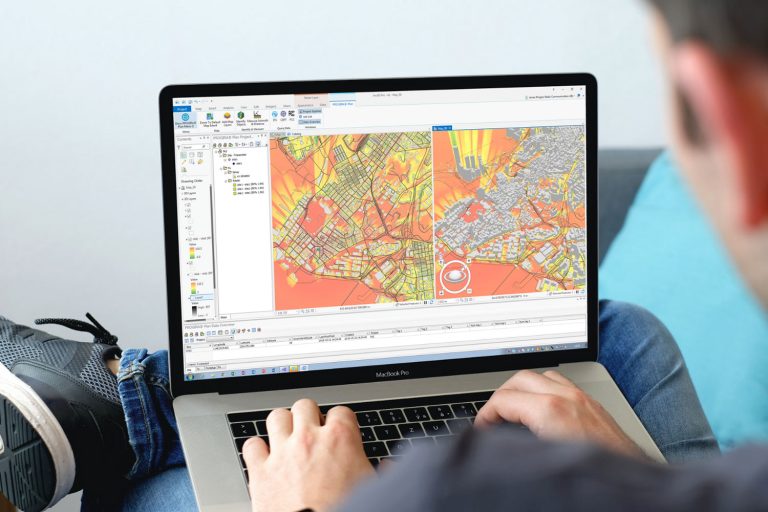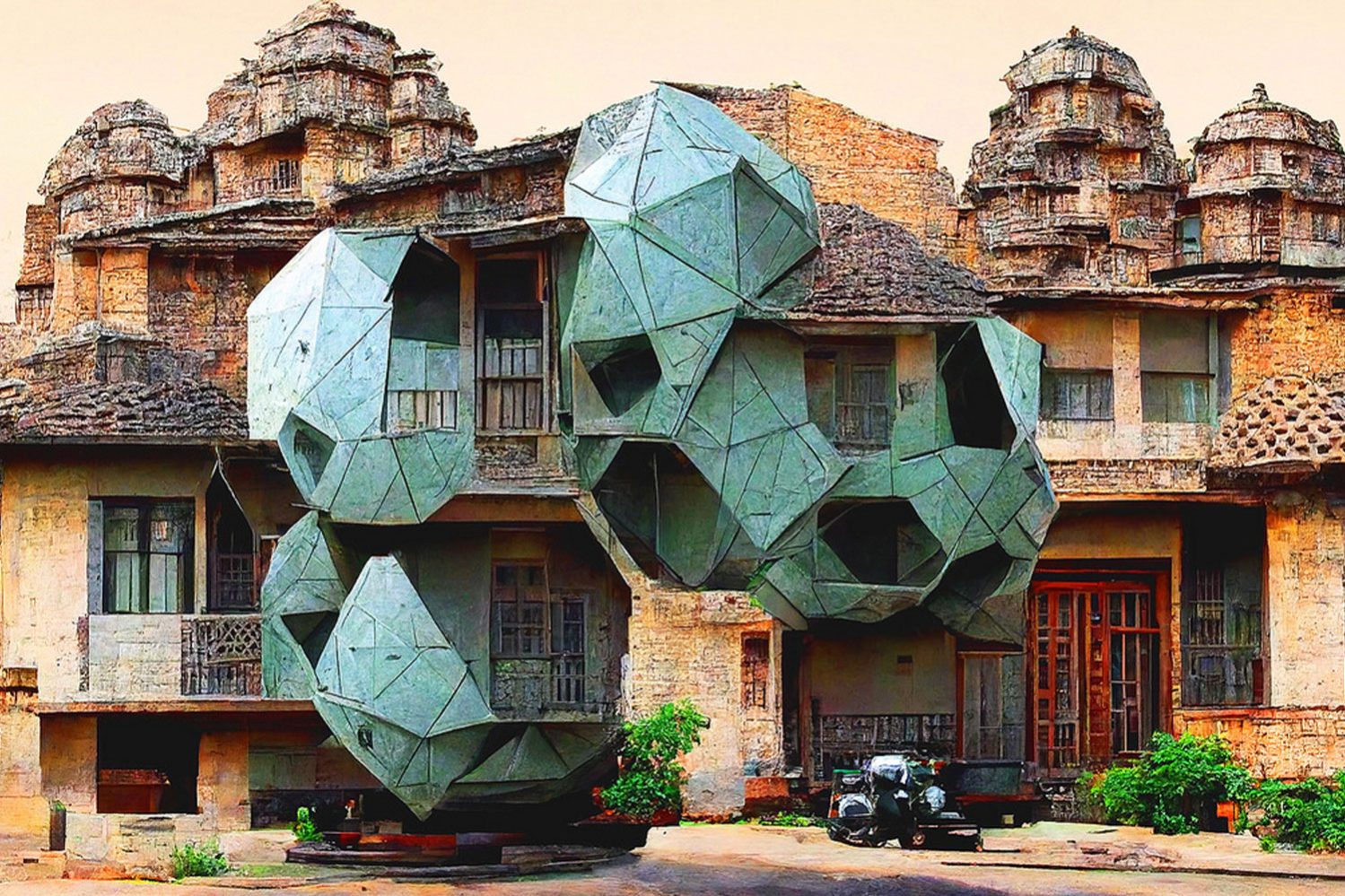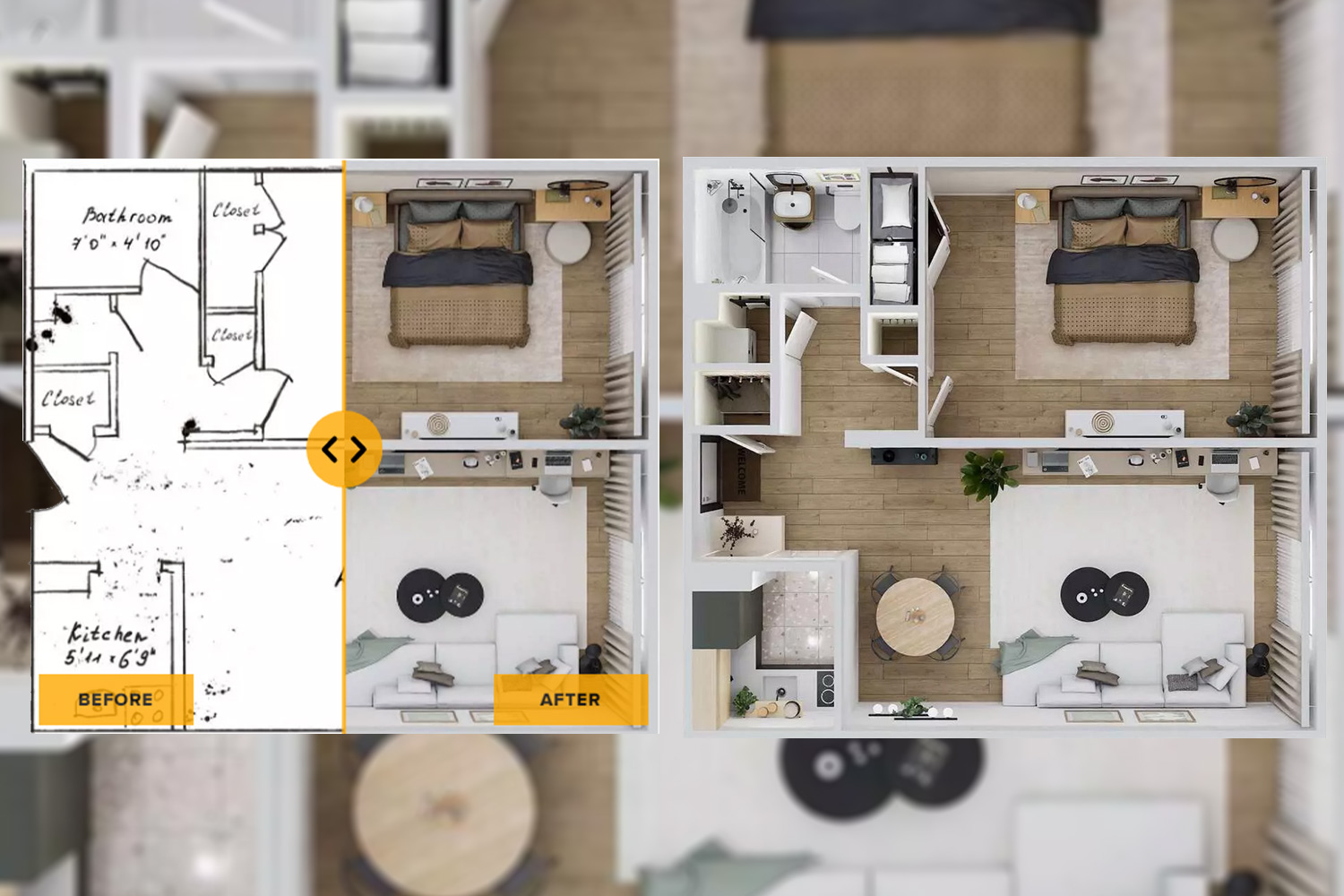
Founded by the architect Dan Stubbergaard in 2006, Cobe Architects is one of the leading architectural companies in Denmark. The firm functions as an international hub consisting of more than 150 dedicated professionals who are concentrated on designing extraordinary urban spaces, surroundings, and edifices that promptly influence daily existence and play an active role in guaranteeing resilient urban living in the future. Cobe is known for its various renowned projects that are outstanding and show their importance given to the transformation as a concept.
Dan Stubbergaard has graduated from The Royal Danish Academy of Fine Arts, School of Architecture, in Copenhagen. Motivated by the metamorphosis of Copenhagen, shifting it from an industrial harbor town into a symbol of livability, he plays a pivotal role in Cobe’s endeavors to design environments that actively enhance remarkable daily experiences. He holds the view that architects bear a significant duty to formulate durable, enduring solutions that enhance life – urban centers, structures, and landscapes crafted to endure beyond our era.
The studio expresses its ideology as living in a 1:1 laboratory. By saying Cobe is a laboratory for architecture on every scale – from the first iterations of design models outlining solutions for tomorrow’s challenges to buildings, landscapes, and cities in a scale of 1:1. Their studio is located in the newly transforming district of Copenhagen, Nordhavn. After Cobe won the competition for the Nordhavn masterplan, their studio has been located in a transformed old warehouse. The site also includes various projects from Cobe, such as the Silo, The Tip of Redmolen, Kronløb Island, and many others, that are slowly shaping the new face of the district.
Approach

Established in Copenhagen, the studio has a reputation that influences the city, with works in a wide variety of functions. It’s hard not to stumble upon any of Cobe’s work during a trip to Copenhagen. It can be a transformed residence from an old industrial building, a bicycle park, or a subway station.
Design for life
One of the studio’s main goals in every project is to improve life. With the projects they produce, they move forward by aiming to make the existing city, building, or landscape better than before. They believe that the most resilient solution is to create something long-lasting and beautiful.
Transforming existing structures and settings
One of the highlights of the studio’s approach is that they have accepted that reusing existing resources is the best option. For this reason, they express that they are challenging the desire to build with new resources. Their projects on the transformation of industrial buildings into resilient and liveable mixed-use neighborhoods draw attention.
Materials for life
The studio, which pays special attention to the circular approach during material selection in its projects, always aims to use long-lasting and beautiful materials that minimize the carbon footprint. As they continue to explore the potential of recycled, alternative materials, they focus on reducing waste and utilizing existing ones. They express that considering engineered wood is the material of the future, the timber used in contemporary structures has the potential to reduce the embodied carbon footprint during the production phase.

The future of mobility
Cobe is actively involved in various aspects of modern mobility solutions, encompassing everything from intermodal mobility centers to the thoughtful planning of gentle modes of transportation and the development of infrastructure for emerging electric options. They hold the view that motivating individuals to alter their behaviors and adjust their individual travel routines can significantly contribute to improving our climate conditions. It is possible to view this approach from various projects such as Karen Blixens Plads with huge numbers of bicycle parking opportunities, Køge Nord Station, the 260-meter-long covered pedestrian bridge, or the ultra-fast charging stations for electric cars.
Performative landscapes
Cobe adopts a perspective that involves crafting cities with a heightened awareness of the harmony between urban environments and nature. Their strategy entails creating practical infrastructural and technological networks that serve urban functions, like managing stormwater, supplying parking, mitigating heat build-up, and addressing fundamental human and communal requirements. According to Cobe, the essence of designing remarkable landscapes lies not merely in adhering to a particular aesthetic or shape but primarily in its capacity to adjust to the specific surroundings, encourage social interactions, and cater to the needs of its inhabitants.
Here is a list of 8 projects from Cobe that are designed with these approaches:
The Silo

Year: 2017
Location: Nordhavn, Copenhagen, Denmark
One person’s trash is another person’s treasure
The project emphasizes one important question: “Is a new build even necessary in a time of resource scarcity?” With this question, The Silo is a transformation and reuse of the existing project. It is a former grain silo that was transformed into a residential complex and public facilities. The former 17-story grain silo stands out as a prominent landmark in Copenhagen’s recently developed Nordhavn neighborhood.
The original silo’s diverse purposes of grain storage and handling have resulted in significant spatial variation, which has been ingeniously utilized to accommodate 39 distinct apartments. The upper and lower levels of the silo are accessible to the public, ensuring a multi-faceted experience for the building’s diverse users. Beyond serving as living quarters, the Silo also functions as a destination, acting as a central urban focal point within the revitalized Nordhavn area.
One impactful piece of information about the project is that within The Silo project, 2,740 m³ of concrete was repurposed, which is tantamount to over 500 tons of embodied CO₂ emissions. Excess concrete from windows, decks, and doors has been creatively recycled to craft seating arrangements and raised platforms in the outdoor environment encircling the structure.
“We wanted to retain the spirit of The Silo as much as possible – both in terms of its monolithic exterior and majestic concrete interior, by simply draping it with a new overcoat. The aim was to transform it from the inside out in such a way that its new inhabitants and the surrounding urban life would highlight the structure’s identity and heritage. Hence, the use of galvanized steel for the facade, which patinates in a raw way and retains the original harbor character and material feel, lending a roughness and raw beauty to the area, as in its industrial past.”
Dan Stubbergaard
Frederiksvej Kindergarten

Year: 2015
Location: Frederiksberg, Denmark
As simple as a kid’s drawing
The Frederiksvej Kindergarten project is one of the most popular designs of the Cobe. With unusual arrangements of simple shapes and creating a small village for children became attractive and received love and praise from many. The description of the project on their website is as follows: Fundamentally, a kindergarten aims to establish a secure, enjoyable, and motivating environment for children to develop. The central idea driving this particular kindergarten project was to construct a building that aligns with a child’s perspective.
The design revolves around a concept that resonates well with children: the playhouse. Taking the form of multiple small houses within a larger one, the interior of the kindergarten is composed of various distinct realms, differing in size and purpose. This notion of a house within a house recurs both indoors and outdoors. The objective is to devise an architecture that a child can easily grasp, drawing inspiration from the uncomplicated and unadulterated quality of a child’s drawing. The outcome is a downscaled space featuring numerous diverse domains while simultaneously fostering a sense of attachment for children to a specific house within the cluster of interconnected houses.
A house within a house concept creates a dynamic and playful environment for the kids in the interior too. Similar to a set of nesting matryoshka dolls, the interior of the kindergarten is constructed from a collection of distinct small worlds tailored for the children. Sleeping areas, restroom facilities, and play corners all take the form of houses with pitched roofs in their design.
Tingbjerg Library

Year: 2018
Location: Copenhagen, Denmark
A setting for social interaction
The Tingbjerg Library serves as an expansion of the existing school and consists of two primary purposes: functioning as both a library and a cultural center. Positioned at the heart of Tingbjerg, this library introduces a fresh communal gathering spot that attracts individuals to the vicinity.
Tingbjerg was initially conceived as a contemporary suburban garden city intended to provide top-notch housing and lush green spaces. It symbolized a fresh beginning for numerous families in the 1950s and 60s, a period when many people began owning cars and relocating from the polluted urban center after the war. Currently, the neighborhood is listed as a socially marginalized area with high crime rates, according to the Danish government, and it is marred by negative media portrayal.
The establishment of the Tingbjerg Library forms part of an ambitious initiative aimed at rejuvenating the locale and reinstating a sense of pride. Through the creation of a local community hub and an iconic center for learning and knowledge, a space emerges where residents can connect despite cultural barriers. Emulating an open framework in its architecture, the library is meticulously designed to project the building’s vibrancy and the lives of Tingbjerg’s inhabitants onto the surrounding landscape, effectively functioning as a sizable display. The project emphasizes the question, “Can architecture help redefine the identity of an area?”
“As an architect, it is an honor to have the opportunity to build in Tingbjerg because of its rich architectural history and because it was created by two prominent figures in Danish modernism, architect Steen Eiler Rasmussen and landscape architect Carl Theodor Sørensen, so you feel obligated to try to match their achievements. Before we even began our work the bar was set high. We wanted to create a new destination in Tingbjerg that respects both its surroundings through choice of materials and shape while at the same time creating a strong identity of its own.”
Dan Stubbergaard
Red Cross Volunteer House

Year: 2017
Location: Copenhagen, Denmark
A building turned into a public space
The program for this project is a house for the volunteers of the Danish Red Cross, including exhibition and workshop spaces, incident rooms, conference rooms, and café. The Danish Red Cross alone boasts a volunteer count of 32,000 individuals who undertake significant social responsibilities. To commemorate the substantial potential inherent in mobilizing civil society, the expansion of the organization’s headquarters was envisioned as an open, inclusive, and democratic structure. Taking on a triangular shape and featuring a roof area accessible to the public, the Volunteer House is meticulously designed to exude an inviting atmosphere, urging passersby to step inside and explore. This building serves as a space for Red Cross volunteers to convene and exchange knowledge, but it also stands as a communal area accessible to all.
The Red Cross Volunteer House is an extension of the Danish Red Cross headquarters, a modernistic building from the 1950s originally designed as the head office for the regional government of the greater Copenhagen area. The design process continued in collaboration with the users. And the users agreed that the roof of the Volunteer House should be an active part of the building – a fifth façade. South-facing stands for the public to relax and enjoy the sun.
Karen Blixens Plads

Year: 2019
Location: Copenhagen, Denmark
Bicycle parking under the hills
Karen Blixens Plads stands as an urban area within the University of Copenhagen’s South Campus. Covering approximately 20,000 square meters, Karen Blixens Plads holds the distinction of being one of Copenhagen’s largest public squares. This plaza is positioned between the recently erected university structures of the South Campus and the Amager Commons nature reserve. Using a gradual transition, this urban space seamlessly connects to Amager Commons, creating a distinctive blend of a park and a public square. The layout takes the form of an amalgamated surface of human-made hills and valleys, accommodating up to 2,000 bicycles within these elevated features. The square serves both as a functional component of the campus landscape and as a recreational asset. The essential infrastructure is ingeniously transformed into a multi-dimensional hangout area for students.
The previous condition of the square included bicycles of the student but in an unarranged situation on the gray blend surface. Even though the square has always been one of the largest in Copenhagen, it was also one of the least used and active ones. The dynamic and useful components of the design helped to create a more active square for both students near and all of the users.
“Copenhagen is one of the world’s leading bicycle cities, with more than 40 per cent of the city’s inhabitants riding their bike for their daily commute. That requires a new and flexible approach to bicycle parking. In previous projects we have developed innovative bicycle parking solutions that form a natural element in the environment. By Nørreport Station, for example, we created the so-called bicycle beds, and here, at Karen Blixen Plads, the solution is bicycle hills. The integrated hilly landscape creates a space with a large capacity for bicycles, two-thirds of them in covered spaces inside the bicycle hills.”
Dan Stubbergaard
Kids’ City Christianshavn

Year: 2017
Location: Copenhagen, Denmark
Collaborators: NORD Architects Copenhagen
A city for the next generation
The Kids’ City Christianshavn includes a nursery, daycare, and after-school club for the ages of 0 to 15. This preschool and youth club, the largest in Denmark, hosts a total of 750 children. When faced with the need to accommodate a growing child population, how can we prevent the creation of standardized daycare facilities? Confronting this challenge, this establishment is conceived not as a single substantial building, but rather as a miniature city designed exclusively for kids. Similar to Copenhagen, this innovative city incorporates diverse neighborhoods, individual houses, communal spaces, plazas, and parks. It even encompasses specific features such as a city hall, fire station, restaurant, stadium, library, museum, and factory. The objective of Kids’ City Christianshavn is to be globally recognized as the preeminent city designed for children, celebrating the same diversity found within an actual city.
As the children grow, they move between the different neighborhoods in the daycare facility. The idea is that the physical and visual contact between the different age groups will strengthen the overall sense of community by smoothing the transitions between the “neighborhoods” in the “city”. The project was developed in collaboration with another renowned firm, NORD Architects Copenhagen.
“Copenhagen is made up of many neighborhoods, each with special buildings that carry a particular history or meaning. These buildings provide the different areas with character and atmosphere. In the same way, Kids’ City Christianshavn has been designed to reflect the city’s architectural diversity.”
Dan Stubbergaard
Ultra-Fast Charging Stations for Electric Cars

Year: 2019
Location: Fredericia (2019) + Multiple locations in Denmark
From gas station to recharge station
This project is a modular, sizable, and adaptable charging station for electric vehicles. The advent of electric mobility will bring about a profound transformation in the visual, sensory, and structural aspects of our urban areas in the future. Innovative design of Cobe for ultra-fast charging stations stems from a comprehensive reimagining of the “mobility experience” for electric vehicle users. These charging stations not only reduce charging times but also offer a meaningful pause for both the driver and passengers, encouraging them and other road users to reconsider their habits. The station is devised with a modular approach that can be adapted on a large scale to keep up with the swift global shift in mobility patterns.
The first application of the project was convicted in Fredericia in 2019, but the project was continuously constructed after in Knudshoved 2019, Aarhus 2020, Frederiksberg 2021, Køge 2022, Esbjerg 2022, Odense 2022, Thisted 2022, Vejle 2023, Hans Knudsens Plads in Copenhagen 2023, Nørresundby 2023. The ultra-fast charging station is designed under a wooden canopy with surface and landscape elements that are scalable for different contexts and conditions. The canopy is constructed for future disassembly to enable reuse and upcycling of materials as needed.
“Electric vehicles are the way of the future. With our design we offer EV drivers a welcome break and an opportunity to recharge mentally in a calm oasis. We wanted the architecture, the materials and the concept to reflect that. Hence, we designed a charging station in natural materials placed in a clean, calm setting with trees and plants that offer people a dose of mindfulness on the highway.”
Dan Stubbergaard
Køge Nord Station

Year: 2019
Location: Køge, Denmark
Collaborator: DISSING+WEITLING Architecture
From private cars to public transformation
Køge Nord Station serves as a pivotal transport center for the entire Copenhagen region, linking high-speed and local trains along with the busiest motorway in Denmark. The project encompasses a footbridge spanning 225 meters, a train station, and an associated park-and-ride facility. On the bridge’s north side, a remarkable 180-degree panoramic view of the landscape and traffic routes unfolds. The bridge’s interior is adorned with wooden slats, creating a warm and inviting atmosphere, while its exterior boasts a more rugged appearance, featuring aluminum plates that align with the materials of the surrounding infrastructure. Elevated above the motorway, the pedestrian bridge serves as a visual enticement for the thousands of commuters traveling by car, encouraging them to consider the alternative option of parking their vehicles at the station and opting for train travel. This not only saves time and money but also contributes to reducing their carbon footprint.
The research during the design process shows that The Køge Nord Station hub is planned for more than 2,000 cars in the future, equal to just 2% of the cars traveling the motorway. This will save 80,000 km traveled back and forth daily and approximately 8,000 tons of CO₂ annually – based on an average car emitting 200-gram CO₂ emissions per km.
“We have designed a landmark for the development that the city of Køge is currently undergoing. A development driven by innovation, pioneering spirit and a bold outlook that is embodied by the station bridge and the related facilities. The bridge is also a new architectural attraction for the area; a long, spectacular steel snake sinuously extending above the railway lines and offering the users a magnificent panoramic view of the cultural landscape.”
Dan Stubbergaard
The diversity in the functions and scales of Cobe’s projects can be seen through in these examples. From a transformation of a silo to designing a small village for children, or from a public square with bicycle parking hills to a bridge that contributes to the reduction of CO₂ emission, Cobe aims to show their architectural approach with these various projects. And so far they are one of the most recognized and inspiring Danish firms in the field of architecture.







































